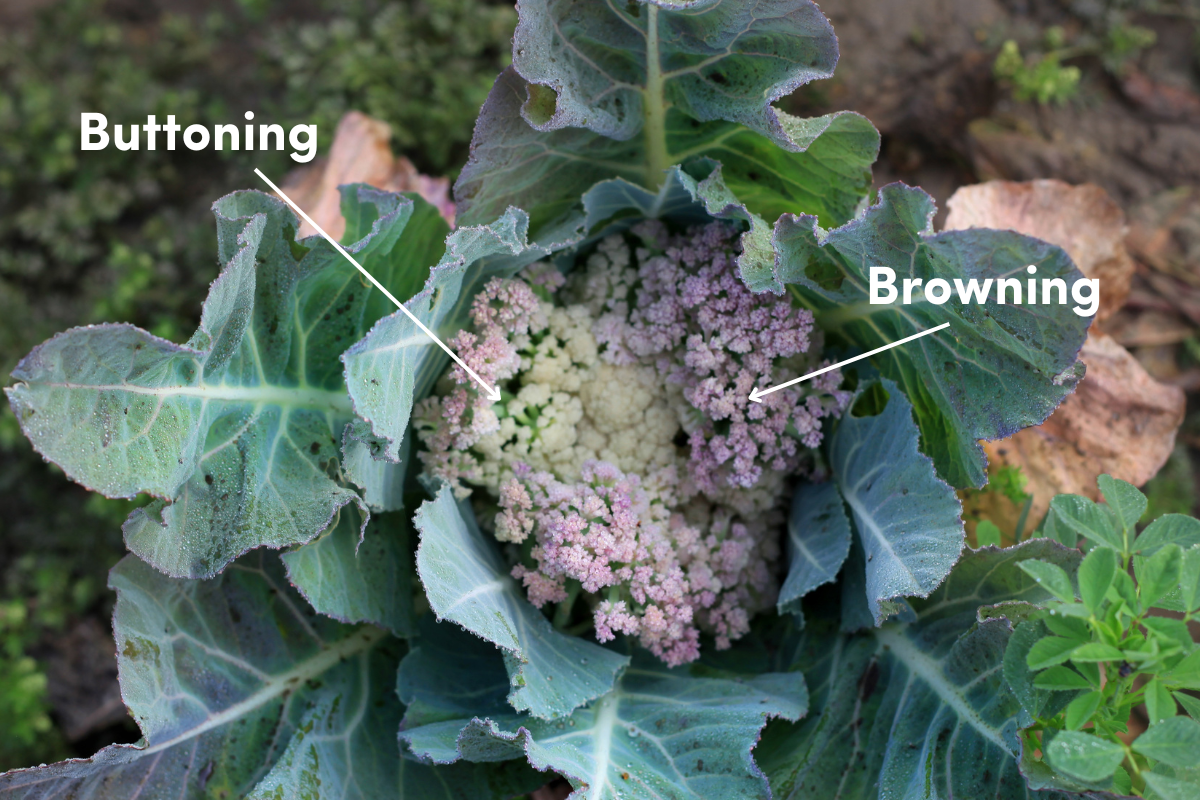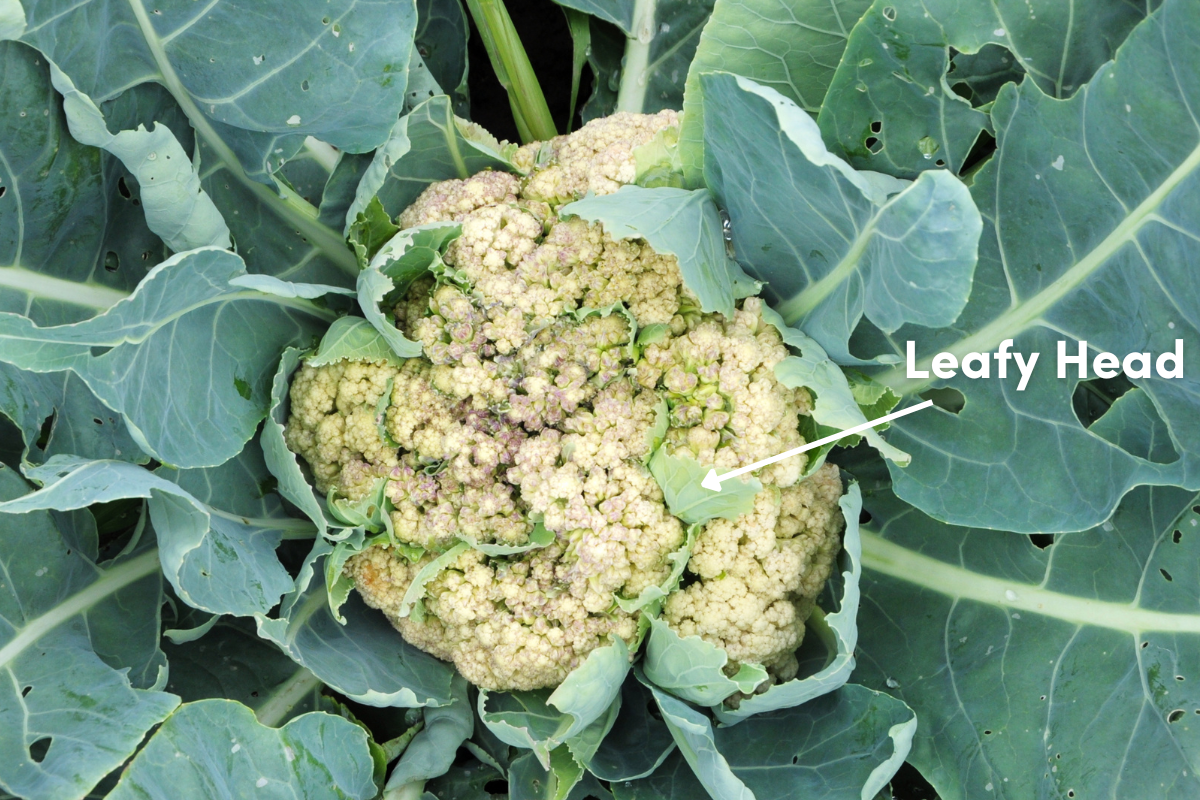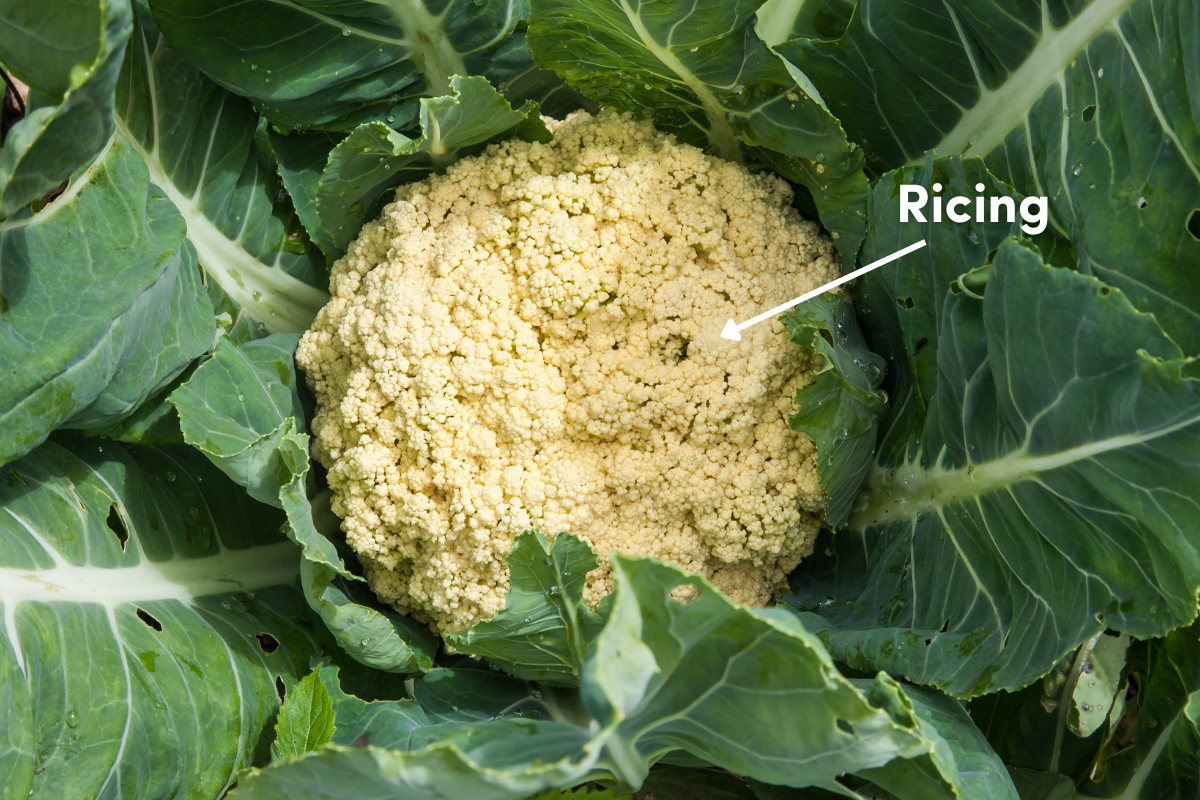Cauliflower is a cool-season crop that's not only delicious but also versatile and nutritious. This cruciferous vegetable is a favorite ingredient among gardeners and cooks alike.
Growing cauliflower is rewarding, but it can also sometimes be a challenging experience. The most common problem gardeners encounter is poor (or no) head formation. Cauliflower is a slow grower, and it’s disappointing to care for plants if no heads appear. What’s more, cauliflower only produces one head per plant, so there are no second chances with this crop.
Read on for tips on how to grow the best cauliflower heads in your garden.
What Is a Cauliflower Head?
A cauliflower head is made up of hundreds of small flower buds. The buds, or curds, form on branched stems, called florets, which together form a large white - or sometimes green or purple - head. Cauliflower heads can be anywhere from 5cm to 30cm in diameter, depending on the variety. Unlike broccoli, cauliflower plants produce only a single head with few if any side shoots. The best heads will have buds so tightly packed it's difficult to see them individually, and will be firm and heavy with no brown discolouration.
Reasons Plants May Not Form Heads
Blindness
Cauliflower head blindness is a problem that can occur when plants do not develop any buds at all. This is usually caused by one of two things - damage to the growing tip of the plant, or fluctuating temperature.
Cauliflower heads grow from the top of the plant, known botanically as the terminal bud. If the terminal bud is damaged or removed the plant will not form a head. To avoid damage to the growing tip, protect plants from accidental damage by pets or passersby, and net them to prevent pest predation.
Cauliflower head blindness can also be caused by fluctuating temperature, something at times outside a garder's control. Genetics can also play a part, with a small percentage of cauliflower seeds being ‘blind’ due to genetic variations in the seed.
In rarer cases blindness may be caused by a nutrient deficiency known as ‘whiptail’. The leaves of plants with whiptail will be yellow at the margins, often with no veins visible. Whiptail is caused by a lack of the micronutrient molybdenum. Unsuitable soil pH that prevents plants accessing molybdenum, rather than a lack of the micronutrient itself, is often the reason plants display symptoms. Testing the soil’s pH and adding lime if needed can help reduce its acidity and correct the problem over time.
Bolting
Bolting is one of the most significant issues when growing cauliflower. This is when plants produce a tall centre stalk which will have a few small buds and flowers, rather than forming the expected compact head. Bolting is usually caused by sudden changes in temperature early in the plant's life, but it can also be due to inconsistent watering. To avoid this issue, plant cauliflower at the recommended time for your climate, water consistently, and maintain even temperatures by mulching plants and shading them on hot days.
Reasons for Malformed or Damaged Heads
Browning
Browning occurs when the heads develop patches or a covering that's brown, yellow or red. This is often caused by a deficiency of the micronutrient boron, which may also cause yellowing in new leaves. Boron deficiency can be addressed by applying a small amount of boron mixed with water at planting, or by applying a very dilute spray of boric acid. Be aware that too much boron is toxic to plants, so only apply the recommended amount.
Sunburn can also cause browning and discolouration. This can be prevented by using leaves to cover developing heads or by growing a 'self-blanching' variety. Brown patches can also be a sign of pest damage; net plants to protect them from aphids and cabbage worms.
Buttoning
Buttoning is when heads form as several separate florets rather than one mass. The florets appear to be spread out and you can often see more stem than curd. Buttoning is usually a sign that the plants have become stressed and have developed heads prematurely. This issue can be caused by a lack of nutrients, extreme temperatures or inconsistent watering. To address this problem, ensure that your plants receive adequate nutrients, water consistently, and mulch and water to maintain even temperatures.
Ricing
Some cauliflower heads may form normally, but with elongated buds that look like grains of rice or, in the worst cases, as though the head is covered in white mould. This issue is usually caused by overfeeding, too much humidity or sudden bursts of warm temperatures. To avoid ricing, plant cauliflower at the recommended spacing to avoid humidity building up around plants, avoid feeding them with too much nitrogen, and protect plants from temperature extremes with mulch and/or shade cloth.
Leafy Heads
Leafy heads are a common problem, even with store-bought cauliflower. Heads with leaves growing through and between the florets can be due to a sudden spike in temperature while the heads are maturing, or a sign that heads have been left too long to harvest. To address this issue, protect plants from temperature fluctuations and harvest when the heads are firm and tightly packed.
Head Splitting
Finally, head splitting is when the curds are firm but separated by one or more cracks, so the head isn't one mass. This issue usually occurs late in the head's development and can be caused by overwatering or too much rain. It can also be a sign that you've left it a little late to harvest. To avoid this aesthatic issue do not overwater at the end of head development, and harvest when the heads are firm and full.
Growing cauliflower can be a rewarding experience, but it's important to be aware of potential issues that can arise. By taking steps to prevent or address common problems, you can ensure that your cauliflower plants grow firm, tightly packed, tasty heads.








